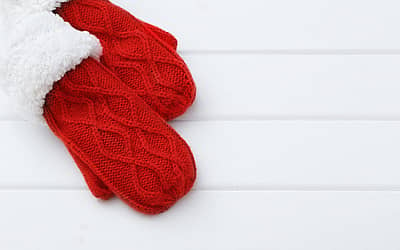
World Hijab Day
Hijab is a style of modest dress that has been part of the Muslim religious faith for hundreds of years. More than just women wearing a head covering, though that is part of it, hijab dress is an important part of lifestyle for both men and women of faith.
Women participate in hijab by wearing clothing that covers everything but their faces, hands to the wrists, and (in many cases) the feet and ankles. For men, the idea of wearing hijab has more to do with covering the lower body and not the head.
Because of its association with the Islamic faith, hijab has often been misunderstood in many parts of the western world. World Hijab Day is part of the effort toward bringing compassion, appreciation and consideration for those who may be different.
History of World Hijab Day
Founded in 2013 by Nazma Khan, World Hijab Day (WHD) is now celebrated in around 190 different countries all over the globe. Khan, a resident of New York who spent part of her childhood in Bangladesh and part in Brooklyn, New York, came up with the idea of establishing the day.
The hope for World Hijab Day was to foster religious tolerance and understanding by inviting non-hijab wearing women (Muslims or non-Muslims) to participate in the day. The effort is meant to end discrimination and bring about a better understanding and ‘sisterhood’ between the women of the world, through awareness and education.
Since its inception, the word about World Hijab Day has grown. New York State recognized the day in 2017 and, that same year, the House of Commons in the United Kingdom hosted an event for the day. World Hijab Day is now celebrated by millions of people all over the world.
World Hijab Day Timeline
627 AD
Contemporary understanding of hijab
Verses in Muhammed’s Hadith address the issue of separation for wives, which may have included a head covering or veil.[1]
13th century
Head coverings are written into law
According to texts in ancient Assyrian, wearing hijab is mandated as a sign of piety.[2]
15th century
Head coverings become tradition in Judaism
Certain members and groups of the orthodox Jewish faith begin wearing head coverings as exampled by Rebekah in the Torah. [3]
1996
Princess Diana wears a headscarf
As a sign of respect, Princess Diana wears a hijab-style headscarf on a visit to Pakistan.[4]
2010
France prohibits full face coverings
In an infamous decision, the country of France bans the use of hijab, head coverings or veils that fully cover the face. [5]
How to Celebrate World Hijab Day
Consider some of these ways to participate and get involved with World Hijab Day:
Wear and Experience Hijab
Even those women who don’t subscribe to the Muslim faith are encouraged to wear hijab on this day as a show of solidarity and respect. The idea is that this offers a unique experience and can help to create empathy between those who might think or act differently. The important thing to remember in this situation is to be culturally sensitive and not to wear hijab in a way that is at all mocking or disrespectful.
Don’t forget that wearing hijab isn’t just about covering the head, but also the rest of the body except for the face and hands or wrists! Choose an appropriate outfit in honor of World Hijab Day.
Learn More About Hijab
One way to show respect for different cultures and religious freedoms is to learn more about them. On World Hijab Day, consider some of these pieces of information that might help shine a light on wearing hijab:
-
Hijab is not just to cover the head. The full extent of wearing hijab is to cover the whole body, other than the face, wrists and ankles. And it’s not just for a bad hair day either – it’s a lifestyle.
-
Hijab can be tied many different ways. Though there are hundreds of ways to tie them, most girls have about four or five that they prefer and stick with.
-
Hijab can be a form of feminism. While in a few restrictive countries hijab may be required, for the most part, understanding hijab is an empowering way that women express their freedoms.
-
Hijab may be worn for different reasons. Women have a variety of different reasons they wear hijab, so don’t make assumptions. If a woman wearing hijab is a new friend, perhaps tell her you would like to learn more and ask her about her own personal reasons for dressing this way.
Stand Up for Women’s Rights
While many of the women who wear hijab in the western world do so voluntarily, it is important to note that women in some countries are required to do so by law, such as Iran or Saudi Arabia. Advocates for religious freedom and women’s rights would encourage women to exercise their own choices and for everyone to have compassion for those women who live in places where they are oppressed based on their gender.
Those who are interested in supporting causes to protect the freedoms for women might consider making a donation or volunteering for a charity that promotes such work. Perhaps one of these charitable organizations might be considered:
- World Hijab Day. The charity behind World Hijab Day works to stop oppression against women and girls who are wearing hijab all over the world.
- The Association for the Development and Enhancement of Women (ADEW). Located in Egypt, this organization works with women to educate, empower, mobilize, advocate and provide resources for women in the Arab world.
- Women’s Islamic Initiative in Spirituality and Equality (WISE). With the belief that Islam teaches that women should be treated equally, this organization fights for the rights of women all over the world.
Join a World Hijab Day Event
The World Hijab Day organization offers a variety of ways to participate in and celebrate this day. WIth live events organized in various places, or virtual events online, one great way to be connected with the day is to join in.
Events may include women telling stories of their choice to wear hijab as well as encouraging a better understanding of what wearing hijab means. Events may be held at schools, universities, community centers and more in various countries throughout the world. To learn more, visit the World Hijab Day website.
Show Respect for Those Wearing Hijab
Not just on World Hijab Day, but every day, it is important to show respect for and kindness to those who are wearing hijab. In most cases, wearing hijab is a personal choice for women who want to exercise certain aspects of their religion, and they should certainly be given the freedom and respect to make that choice.
World Hijab Day FAQs
What is a hijab?
Hijab is a type of modest dress that is worn by some Muslim women, including a head covering. [1]
Why do Muslim women wear hijabs?
Many women who wear hijab do so to act in modesty as well as for religious distinction.[2]
How to pronounce hijab?
The word hijab in English is pronounced ‘hee-jaab’. [3]
When can a woman take off her hijab?
Women who wear hijab typically take it off in front of family members or other women. [4]
Are hijabs religious?
Head coverings, like hijabs, have had significance in many religions including Judaism, Christianity and Islam.[5]






